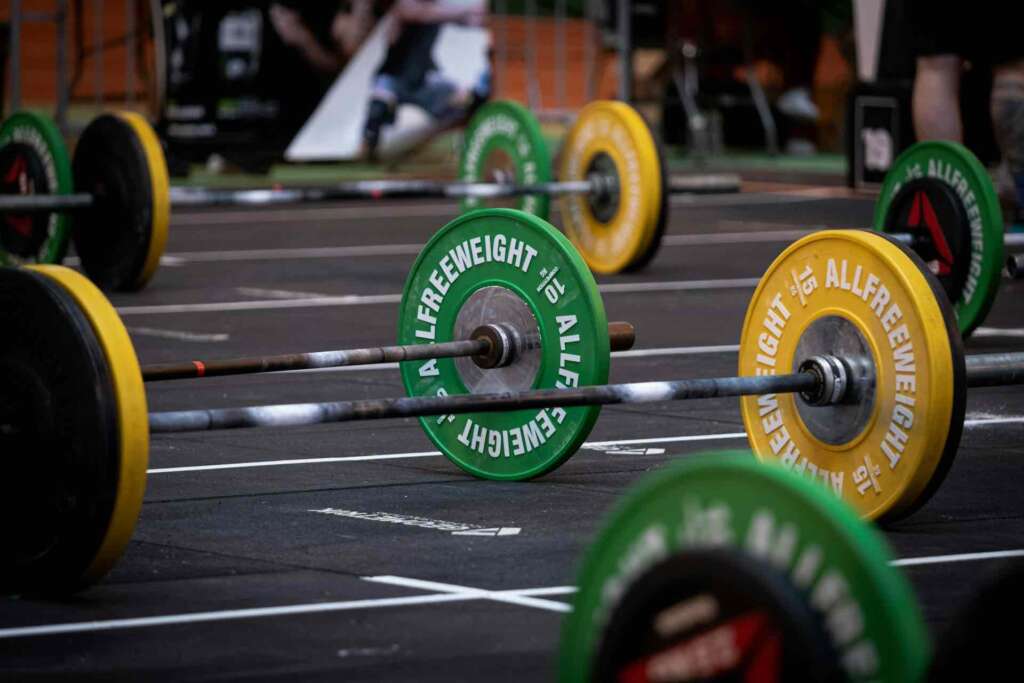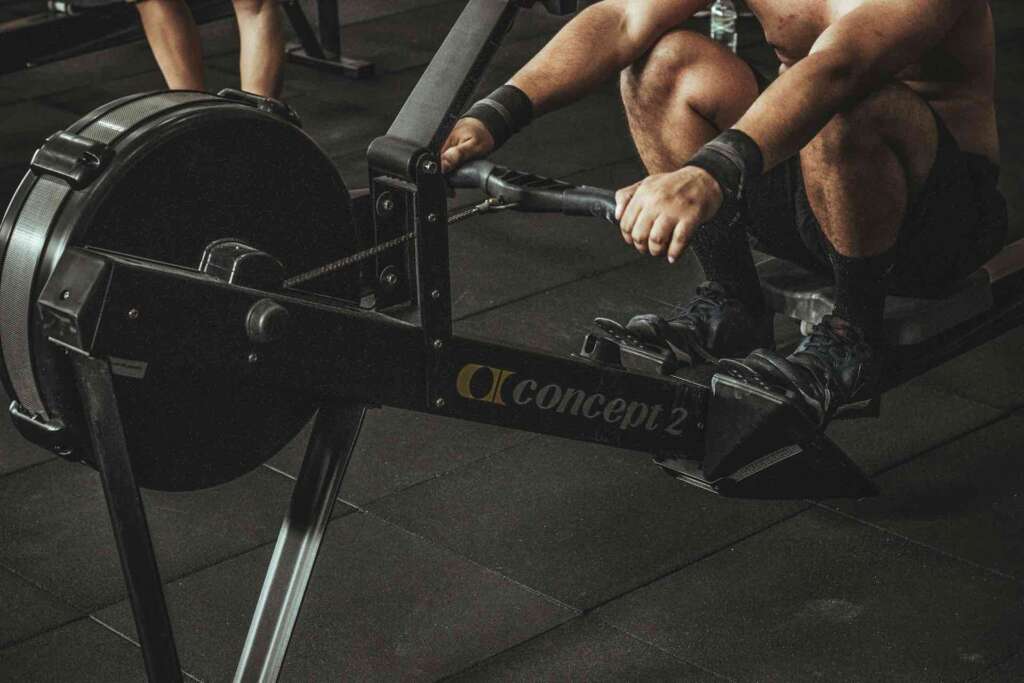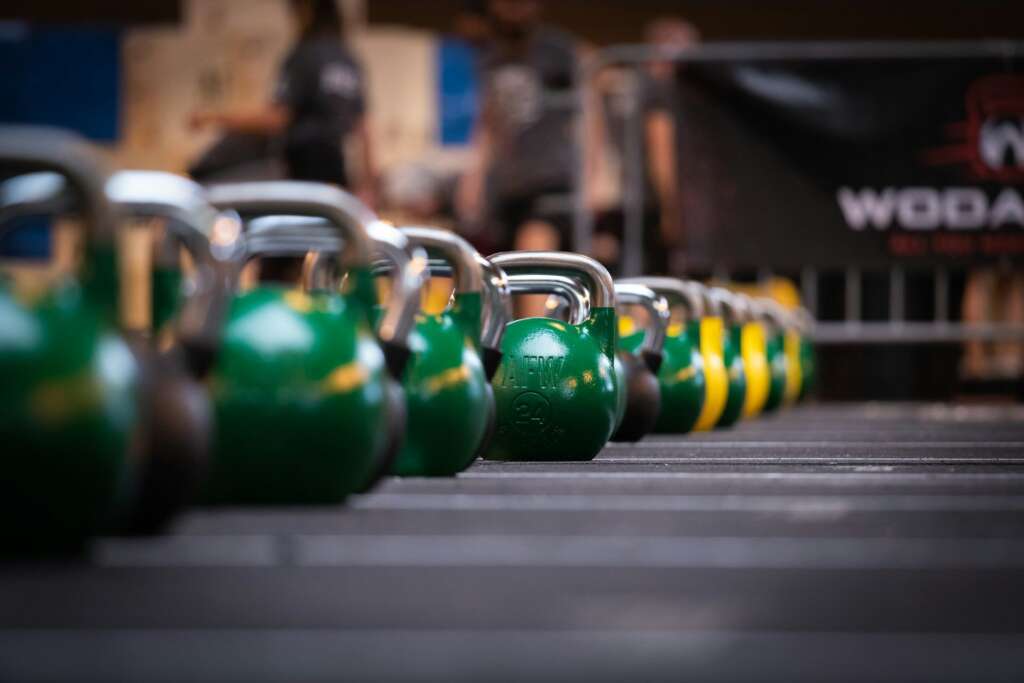A new type of athletic competition that merges the intensity of functional fitness with the endurance demands of a marathon has taken the training world by storm.
Welcome to Hyrox, the ultimate test of strength, stamina, and grit. As more fitness enthusiasts seek new ways to challenge themselves, Hyrox has emerged as a popular event that pushes participants to their limits through a combination of running and functional exercises.
Here’s everything you need to know about what Hyrox is, where events are held and how to prepare for your first or next Hyron event, including a detailed eight-week Hyrox training plan to get you fitter, faster and stronger to set you up for a new personal best.
What is Hyrox?
Hyrox is a competitive fitness event that combines running with various functional fitness exercises. Participants complete a series of eight different workouts, each followed by a 1-kilometre run, totalling 8 kilometres of running and eight workout stations. The exercises include movements such as sled pushes, rowing, burpee broad jumps, and wall balls, designed to test overall fitness, endurance, and strength. The goal is to complete the course as quickly as possible, making it a race against the clock. Hyrox events cater to a wide range of fitness levels, with categories for individuals, doubles, and relay teams. The event’s format promotes a comprehensive approach to fitness, challenging both aerobic capacity and muscular endurance.
Where are Hyrox events held?
Hyrox events are held in major cities around the world, making them accessible to a global audience of fitness enthusiasts. Cities such as London, New York, Berlin, and Sydney have hosted Hyrox competitions, attracting participants from various backgrounds. These events are typically held in large indoor venues like exhibition centres or sports arenas, providing ample space for the running segments and workout stations. The indoor setting ensures that weather conditions do not impact the competition, allowing for a consistent and controlled environment. The growing popularity of Hyrox has led to an expanding schedule of events, with new locations being added regularly to meet the increasing demand.
How can I train for a Hyrox event?
Preparing for a Hyrox event requires a balanced training approach that includes both running and functional fitness exercises. Begin by assessing your current fitness level and setting realistic goals. Incorporate a mix of aerobic and anaerobic training to build endurance and strength. Running should be a staple of your training, with both long-distance runs and interval training to improve your cardiovascular fitness.
Complement this with functional exercises such as sled pushes, rowing, the Ski Erg and burpees to simulate the event’s workout stations. Focus on high-intensity interval training (HIIT) to increase your stamina and ability to recover quickly between exercises. Additionally, ensure your training includes proper nutrition, hydration, and recovery strategies to optimise performance.
8-Week Hyrox Training Plan

Week 1-2: Build Base Fitness
- Monday: Long run (5-8 km at a steady pace)
- Tuesday: Functional strength training (focus on full-body exercises: squats, deadlifts, pull-ups)
- Wednesday: Interval running (10 x 400m at race pace with 1-minute rest)
- Thursday: Rest or light activity (yoga, stretching)
- Friday: HIIT workout (30 minutes of burpees, sled pushes, and rowing)
- Saturday: Tempo run (5 km at a moderately hard pace)
- Sunday: Rest
Week 3-4: Increase Intensity
- Monday: Long run (8-10 km at a steady pace)
- Tuesday: Functional strength training (add weights to exercises)
- Wednesday: Interval running (8 x 500m at race pace with 90 seconds rest)
- Thursday: Rest or light activity
- Friday: Hyrox circuit (3 rounds of 10 burpees, 500m row, 20 wall balls, 200m farmer’s carry)
- Saturday: Fartlek run (8 km with varying paces)
- Sunday: Rest

Week 5-6: Enhance Endurance
- Monday: Long run (10-12 km at a steady pace)
- Tuesday: Functional strength training (focus on event-specific exercises)
- Wednesday: Interval running (6 x 800m at race pace with 2-minute rest)
- Thursday: Rest or light activity
- Friday: Hyrox circuit (4 rounds of 10 burpees, 500m row, 20 wall balls, 200m farmer’s carry)
- Saturday: Easy run (6-8 km at a relaxed pace)
- Sunday: Rest
Week 7: Peak Phase
- Monday: Long run (12-15 km at a steady pace)
- Tuesday: Functional strength training (high intensity, focus on event-specific exercises)
- Wednesday: Interval running (4 x 1 km at race pace with 3-minute rest)
- Thursday: Rest or light activity
- Friday: Hyrox simulation (complete a full Hyrox workout circuit)
- Saturday: Easy run (5-8 km at a relaxed pace)
- Sunday: Rest

Week 8: Event Week
- Monday: Long run (8-10 km at an easy pace)
- Tuesday: Light functional strength training (low intensity, focus on form)
- Wednesday: Interval running (4 x 400m at race pace with 2-minute rest)
- Thursday: Rest or light activity (gentle yoga, stretching)
- Friday: Light Hyrox circuit (2 rounds of event-specific exercises at a moderate pace)
- Saturday: Rest or very light activity (short walk, stretching)
- Sunday: Hyrox Event Day: Hyrox Competition (Ensure proper nutrition, hydration, and rest leading up to the event. Arrive early, warm up thoroughly, and focus on pacing and technique during the competition.)




